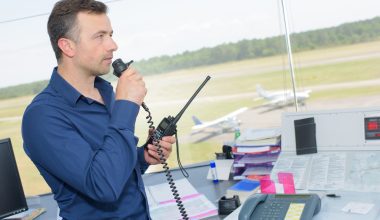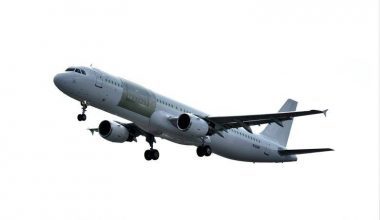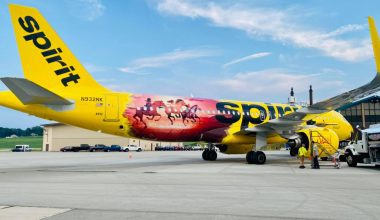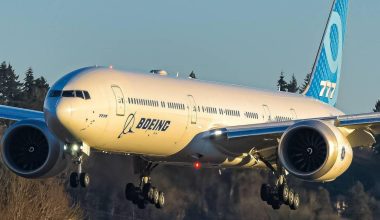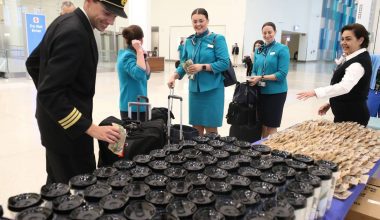The Beechcraft Bonanza is, without a doubt, a legendary light aircraft. It must be mentioned when discussing one of the oldest and most produced aircraft manufactured up to the present day. It is one of the most popular single-engine aircraft since World War II. The Bonanza, which first flew in December 1945, was certified by the Authority in 1947 and was an instant success, with over 1,000 built that year.
Beechcraft
Beechcraft was a well-known aero-manufacturing company founded in 1932 by Walter Beech, Olive Ann Beech, and Ted A. Wells. It produced high-quality light aircraft such as the Beechcraft Baron, Beechcraft Denali, (Super) King Air, C-12 Huron (military version), and the legendary Beechcraft Bonanza series.

Beechcraft, which consists of 2 divisions of Raytheon then Hawker Beechcraft, was most well-known for its light or private aircraft until 2013, when it filed for bankruptcy with approximately 5,400 employees worldwide, including about 3,300 at its headquarters. It had 18 entities and debt worth $2.4 billion in bankruptcy. Later, Textron Aviation purchased the company on December 26, 2013, and merged it with one of aviation’s largest competitors, Cessna Aircraft Company.
History and Development Phase
During 1945, a small group of special engineers and designers worked outside of their military production responsibilities to develop a design that would capture that new aviation market. Ted Wells, Vice President of engineering at Beechcraft, tasked project engineer Ralph Harman with a small team to design an airplane that would help the company into the postwar period. They went through the same decision-making process as every other aero manufacturer, but they avoided the trainer market and went straight to the top of the four-place market. Walter Beech, in fact, wished for his new plane to set a new standard for quality and performance. His design team accomplished their goal.
Also Read: Lufthansa Has Confirmed That The Airbus A380 Will Not Return
Before aerodynamicist Jerry Gordon settled on a “V” tail configuration, they designed and mocked up several versions, including one with a conventional tail. He reasoned that it would produce less drag, weigh less, and provide some benefits in preventing spins. The final design was built in two prototypes, one with a four-cylinder, geared Lycoming GO-290 engine producing 160 horsepower and the other with a Continental E-165 six-cylinder engine producing 165 horsepower. The Lycoming plane also had a laminar flow wing, whereas the Continental plane used the more well-known 23000 series airfoil.

The prototype 35 Bonanza flew for the first time on December 22, 1945, and received an airworthiness certificate on March 25, 1947. The first 30–40 Bonanzas were built with fabric-covered flaps and ailerons, later replaced with magnesium alloy sheets. In reality, the Bonanza was most probably the first civilian airplane to undergo such extensive testing before taking to the skies. Beechcraft built their own 10-foot wind tunnel to test various designs, and the airframe was subjected to extensive fatigue and flutter tests before it was ever flown.
Variants and Specification
The Bonanza series had major three variants;
- Model 35 Bonanza with V tail produced between 1947 to 1982
- Model 33 Bonanza with conventional tail produced between 1960 to 1995
- Model 36 Bonanza a stretched model of 33 produced between 1968 till the date now
The above variants also have different model of aircraft with their unique features. Bonanza G36 is the latest model of the Bonanza series, which started its production in 2006.
The first Bonanza aircraft, the Bonanza 35, was powered by a Continental Motors E-165 165 horsepower engine. The aircraft has a range of 1200 km and a cruising speed of 152 knots. It has a wingspan of 32ft 9 7/8 inch, a length of 25ft 1 by 4 inch, and a height of 7 feet 1 inch. The latest Bonanza variant G36 is powered by a single Continental IO-550-B 300 hp engine and a three-bladed Hartzell Propeller with a diameter of 6 ft 8 in. With a cruising speed of 176 knots, the aircraft has a total range of 1,720 kilometers. It measures 33 feet 6 inches in wingspan, 27 feet 6 inches in length, and 8 feet 7 inches in height.
Operational History
The Beechcraft Bonanza series has been in continuous production for the longest time than any airplane in history. More than 17000 Bonanza series have been produced to date, including all variants. It is ranked 15th in the most produced aircraft and 7th in the most produced civilian aircraft. When the Bonanza was first released to the public in 1947, it cost $7,950, roughly $85,000 today.
Due to crashes by overconfidence, rich amateur pilots, fatal accidents, and flight disruptions, Beechcraft Bonanza 36 V-tail design has been reputed as the ‘forked tail physician killer.’ Pilot error was the cause of 73 percent of V-tail crashes and 83 percent of conventional-tail crashes, respectively, with aircraft-related reasons accounting for 15 percent and 11 percent of crashes. The V-tail Bonanza was discontinued in 1982, but the conventional-tail Model 33 was manufactured until 1995. The Model 36 Bonanza, a longer-bodied, straight-tail variant of the original design introduced in 1968, is still produced today.
The Beechcraft Bonanza played a vital role in the establishment of aviation in Nepal. The arrival of Indian Ambassador Mr. Sarjit Singh Mahathia via Beechcraft Bonanza aircraft at Gauchar Airport in 1949 A.D. marked the beginning of aviation in Nepal. The Beechcraft Bonanza was also the first aircraft to land in Nepal.

Captain William Odom flew the fourth Bonanza off the assembly line from Honolulu, Hawaii, to the continental United States in January 1949, making it the first light airplane to do so. Then the aircraft was given the name Waikiki Beech. In March of the same year, Captain Odom flew Waikiki Beech from Honolulu to Teterboro, New Jersey, setting a nonstop record. The flight time was 36:01 hours, with an average speed of 235.4 km/h and fuel consumption of 272.25 US gallons.
On May 31, 2014, 19-year-old MIT student Matt Guthmiller of Aberdeen, South Dakota, took off in a 1981 A36 Bonanza from Gillespie Field in El Cajon, California, on a 44-day-12-hour solo circumnavigation, becoming the Guinness World Record holder as the youngest person to fly solo around the world when he landed back in El Cajon on July 14, 2014, at 19 years, seven months, and 15 days.
Textron Aviation currently manufactures the Beechcraft Bonanza at Beech Factory Airport in Wichita, Kansas. Beechcraft owns the airport privately. The airport has a total area of 1,280 acres (520 ha) and is located at an elevation of 429 meters above mean sea level. It has one runway, 1/19, with a concrete surface measuring 2,438 by 30 meters.
The Bonanza is popular with air charter companies and is operated by private individuals and companies. Beyond the individual, it is owned by different countries for military purposes, including national air force aircraft as well. The Beechcraft Bonanza has been involved in several accidents and incidents throughout its history. According to the Aviation Safety Network, a total of 515 accidents and incidents have been recorded in their database since 1970.

